

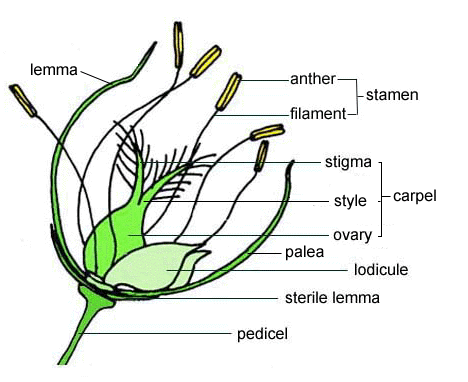
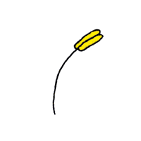
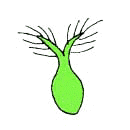
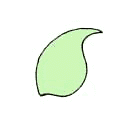
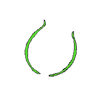

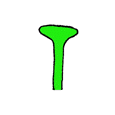
The rice
"flower" is called a SPIKELET. The floral organs are what's inside the
lemma and the palea. A spikelet consists of all parts in the above figure.
 Stamen
Stamen
-
There are 6 stamens in each rice flower.
-
Each stamen is composed of an anther and a
filament.
-
An anther includes 4 elongated sacs where
pollen grains are stored.
-
The filament is a long, thin stem that holds
the anther. The vascular bundles in the filament transport nutrients and
water to the anther.
.gif) This is an anther after the pollen
grains inside are released.
This is an anther after the pollen
grains inside are released.
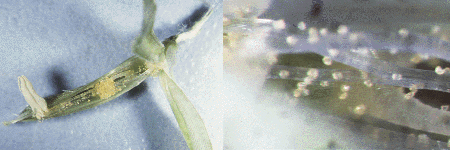 Here are some pictures of pollen grains.
Here are some pictures of pollen grains.
 Carpel
Carpel
-
The carpel consists of the female parts
of the rice flower--the Stigma, the style ,and the ovary.
-
The stigma receives pollen grains, which will
then be transported into the ovary, where fertilization
occurs.
Here are some wonderful
pictures of the carpel

 Lodicule
Lodicule
-
On a rainy day, or when the temperature is
too low or too high ,the lodicules shrink , causing the spikelet to close.
-
When the floral parts mature, the lodicules
will swell and open the spikelet to expose the mature floral parts.
 Lemma
and Palea
Lemma
and Palea
-
These are hardened, modified stems that protect
the floral organs.
-
The lemma is relatively larger than the palea.
-
When the spikelet is closed, the lemma partly
encloses the palea.
-
The pointed end on top of the lemma is called
an awn.
 Sterile
lemma
Sterile
lemma
-
The sterile lemmas are much smaller in size
than the lemma, and they do not bear flower, hence their name "sterile".
 Pedicel
Pedicel
-
A pedicel branches from every node on the
secondary rachis and a flower is produced on top of it.


Introduction |
Flowers&Fruit |
Roots |
Stems |
Leaves
© Thomas L. Rost 1997
Section of Plant Biology
Division of Biological Sciences
UNIVERSITY OF CALIFORNIA, DAVIS







 Stamen
Stamen
.gif)


 Sterile
lemma
Sterile
lemma
 Pedicel
Pedicel
